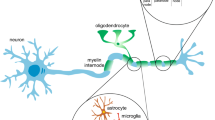The study was carried out on 30 mature WAG rats, 15 intact control animals and 15 rats with modeled Alzheimer’s disease (AD) induced by course injections of scopolamine (27 days, 1 mg/kg, i.p. daily). The contents of ATP, glucose, pyruvate, and lactate were measured spectrophotometrically in homogenates of the brain cortex of the animals. The levels of TSH, T3, and T4 in blood serum and those of T3 and T4 in cortex homogenates were estimated using ELISA. The activities of pyruvate dehydrogenase, creatine phosphokinase, and key enzymes of the tricarboxylic acid cycle (TCA) were measured in the mitochondria using a spectrophotometric technique. It was found that the content of T3 in the brain cortex of rats was much lower than in the controls against the background of higher T4 concentrations, which was indicative of the development of local hypothyroidism in the brain. The increased activity of pyruvate dehydrogenase against the background of low activities of TCA cycle enzymes in brain homogenates was observed. The decreased creatine kinase activity and low ATP contents were also found. Local hypothyroidism in the brain cortex is believed to be one of the significant factors inducing the development of strong energy deficiency and reducing the activity of Krebs cycle enzymes. Consequently, this contributes to the death of neurons in experimental AD in rats.
Similar content being viewed by others
References
H. V. Vinters, “Emerging concepts in Alzheimer’s disease,” Annu. Rev. Pathol., 10, 291-319 (2015).
A. Kumar, A. Singh, and Ekavali, “A review on Alzheimer ’s disease pathophysiology and its management: an update,” Pharmacol. Rep., 67, No. 2, 195-203 (2015).
G. J. McBean, M. G. López, and F. K. Wallner, “Redoxbased therapeutics in neurodegenerative disease,” Br. J. Pharmacol., 174, No. 12, 1750-1770 (2017).
B. P. Lucke-Wold, R. C. Turner, A. F. Logsdon, et al., “Common mechanisms of Alzheimer’s disease and ischemic stroke: the role of protein kinase C in the progression of age-related neurodegeneration,” J. Alzheimers Dis., 43, No. 3, 711-724 (2015).
J. Z. Wang, Y. Y. Xia, I. Grundke-Iqbal, and K. Iqbal, “Abnormal hyperphosphorylation of tau: sites, regulation, and molecular mechanism of neurofibrillary degeneration,” J. Alzheimer`s Dis., 33, Suppl. 1, 123-139 (2013).
M. Kolarova, F. García-Sierra, A. Bartos, et al., “Structure and pathology of tau protein in Alzheimer disease,” Int. J. Alzheimer`s Dis., 731526; doi: 10.1155/2012/731526 (2012).
M. Domise, S. Didier, C. Marinangeli, et al., “AMPactivated protein kinase modulates tau phosphorylation and tau pathology in vivo,” Sci. Rep., 6, 26758; doi: https://doi.org/10.1038/srep26758 (2016).
T. Kanekiyo, H. Xu, and G. Bu, “ApoE and Aβ in Alzheimer’s disease: Accidental encounters or partners?” Neuron, 81, No. 4, 740-754 (2014).
C. C. Liu, C. C. Liu, T. Kanekiyo, et al., “Apolipoprotein E and Alzheimer disease: risk, mechanisms, and therapy,” Nat. Rev. Neurol., 9, No. 2, 106-118 (2013).
A. N. Mironova, Manual for Carrying Out Preclinical Studies of Pharmacological Agents, Part 1, Grif and Co., Moscow (2012).
R. D. Deyko, C. Yu. Shtrygol’, T. V. Gorbach, et al., “Nootropic properties of a tetrapeptide, Acetyl-(DLys)-Lys-Arg-Arg-Amide (KK-1), in a rat model of Alzheimer’s disease induced by chronic introduction of scopolamine,” Klin. Farmats., 20, No. 4, 52-61 (2016).
M. I. Prokhorova, Methods of Biochemical Studies (Lipid and Energetic Metabolism), Publ. House of the Leningrad University, Leningrad (1982).
D. J. Selkoe and J. Hardy, “The amyloid hypothesis of Alzheimer’s disease at 25 years,” EMBO Mol. Med., 8, No. 6, 595-608 (2016).
L. C. Costantini, L. J. Barr, J. L. Vogel, and S. T Henderson, “Hypometabolism as a therapeutic target in Alzheimer’s disease,” BMC Neurosci., 9, Suppl. 2, S16; doi: https://doi.org/10.1186/1471-2202-9-S2-S16 (2008).
G. S. Bloom, “Amyloid-β and tau: the trigger and bullet in Alzheimer disease pathogenesis,” JAMA Neurol., 71, No. 4, 505-508 (2014).
Y. Deng, B. Li, Y. Liu, et al., “Dysregulation of insulin signaling, glucose transporters, O-GlcNAcylation, and phosphorylation of tau and neurofilaments in the brain implication for Alzheimer’s disease,” Am. J. Pathol., 175, No. 5, 2089-2098 (2013).
R. R. Attia, S. Connnaughton, L. R. Boone, et al., “Regulation of pyruvate dehydrogenase kinase 4 (PDK4) by thyroid hormone: role of the peroxisome proliferatoractivated receptor gamma coactivator (PGC-1 alpha),” J. Biol. Chem., 285, No. 4, 2375-2385 (2010).
J. H. Duncan Bassett, “Thyroid hormone action: Genomic and non-genomic effects,” Endocrine Abstr., 25, S6.1 (2011).
J. Y. Kim, N. Kim, Z. Zheng, et al., “The 70 kDa heat shock protein protects against experimental traumatic brain injury,” Neurobiol. Dis., 58, 289-295 (2013).
I. V. Gorodetskaya, A. P. Bozhko, L. Y. Bakhtina, and I. Yu. Malyshev, “Role of thyroid hormones in stress-induced synthesis of heat-shock proteins in the myocardium,” Bull. Exp. Biol. Med., 130, No. 12, 1138-1140 (2000).
Author information
Authors and Affiliations
Corresponding authors
Rights and permissions
About this article
Cite this article
Gorbach, T.V., Nakonechna, O.A., Tkachenko, A.S. et al. Levels of Thyroid Hormones and Indices of Energy Metabolism in the Cerebral Cortex of Rats with Experimental Alzheimer’s Disease. Neurophysiology 50, 159–165 (2018). https://doi.org/10.1007/s11062-018-9732-4
Received:
Published:
Issue Date:
DOI: https://doi.org/10.1007/s11062-018-9732-4




